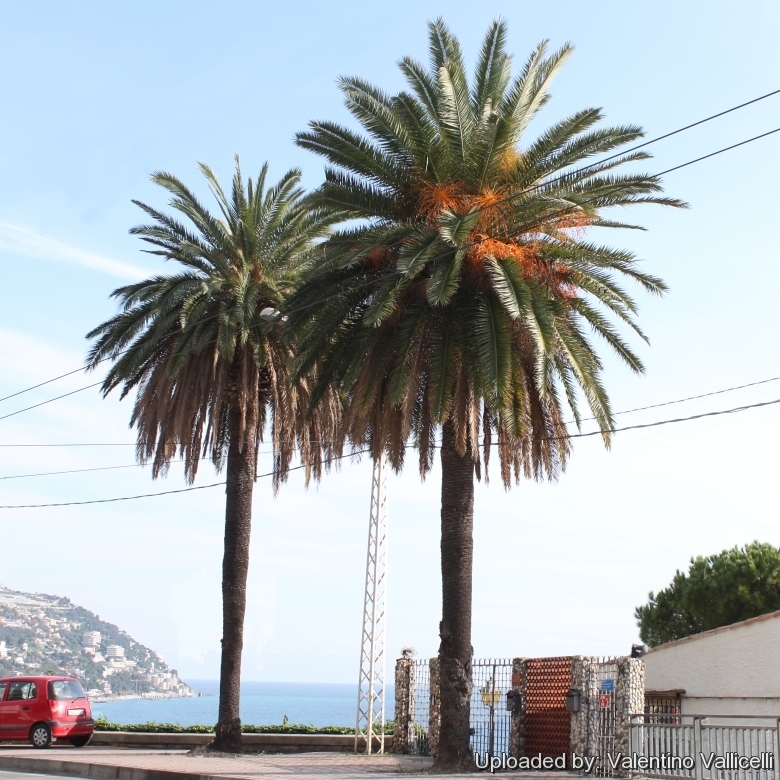
Phoenix canariensis Photo by: Valentino Vallicelli
Habit at Bordighera, Liguria, Italy.
Origin and Habitat: It is endemic to the Canary Islands, but very widely cultivated in warm temperate regions of the world, particularly in areas with Mediterranean climates. It is naturalized in New Zealand where it has proven to be an invasive plant
Habitat: It grows mostly in the bottom of valleys on a wide variety of soils, all of volcanic origin and usually fertile and below 600 metres. Phoenix canariensisSN|24938]]SN|24938]] has an extensive root system, which allows this palm to explore the surrounding earth to find subterranean water even at long distances. It even grow in subxeric areas because it is resistant to temporary swamping of the soil caused by sudden rains.
Synonyms:
See all synonyms of Phoenix canariensis
back
Accepted name in llifle Database:Phoenix canariensis hort. ex ChabaudProv. Agric. Hort. Ill. n. 19: 293 ff. 66. 1882Synonymy: 9
back
Common Names include:
ENGLISH: Pineapple palm, Canary Islands date palm, Canary date palm, Canary date, Canaries date palm
ARABIC ( لعربية ): نخيل الكناري
BASQUE (Euskara): Kanariar palmondo
BULGARIAN (Български): канарска финикова палма
CATALAN (Català): Palmera canària
CHINESE (中文): 加拿利海枣 (Jia na li hai zao), Bing lang zhu, Jia na li ci kui, Zhen kui
CROATIAN (Hrvatski): Kanarska datulja
DUTCH (Nederlands): Canarische dadelpalm, Canarische dadel palm
FINNISH (Suomi): Kanariantaateli
FRENCH (Français): Palmier dattier des Canaries, Faux dattier, Palmier des Canaries, Dattier des Canaries, Palmier ornemental des Canaries
GERMAN (Deutsch): Kanarische Dattelpalme, Dattelpalme
GREEK (Ελληνικά): Κανάριος Φοίνικας
HUNGARIAN (Magyar): Kanári datolyapálma
ITALIAN (Italiano): Palma delle Canarie
JAPANESE (日本語): カナリーヤシ, Fenikkusu, Kanarii yashi
KOREAN (한국어): K'a na ri a ya cha
LITHUANIAN (Lietuvių): Kanarinis finikas
NORTH FRISIAN (Frasch/Fresk/Nordfriisk): (Nordfriisk): Kanaarisk datelpualem
NORWEGIAN (Bokmål): Kanariepalme
NORWEGIAN (Nynorsk): Kanaripalme
PIEMONTES (Piemontèis): Daktylowiec kanaryjski, Palma dle Canarie
POLISH ( Polski): Daktylowiec kanaryjski
PORTUGUESE (Português): Palmeira-das-canárias
SLOVAK (Slovenčina): Ďatľovník kanársky
SLOVENIAN (Slovenščina): Kanarski datljevec
SPANISH (Español): Palmera canària, Palmera canaria, Palma canaria
SWEDISH (Svenska): Kanariepalm
THAI (ภาษาไทย): Финиковая пальма канарская, ปาล์มขนนก, Finik kanarskii
UPPER SORBIAN (Hornjoserbsce): Kanariski datlowc
Description: Phoenix canariensisSN|24918]]SN|24938]] ia a massive and majestic palm, easily recognized through its characteristics solid trunk and crown and one of the most widespread of all ornamental plants. It is relative to the date palm (Phoenix dactyliferaSN|24938]]SN|24918]]) and can hybridize with it..
Trunk: Solitary, columnar, thick, hulking 10-20(-40) m tall, 30-40 cm in diameter covered with old dried fronds, but it is not uncommon to see the trunk pruned and trimmed to show the diamond designs that mark the point of attachment of the leaves. When pruned, the bottom of the crown, also called the nut, appears to have a pineapple shape.
Crown: Huge 8-12 mt in diameter, dense, with over 50 long arching fronds.
Leaves (fronds): Narrowly oblong, pinnate, 4–6 m long, with 80-100 linear leaflets on each side of the central rachis deep green shading to a yellow stem where the leaflets are replaced by strong, sharp spines on the petiole. Not self-cleaning, so the old leaves need to be cut off by hand (not an insignificant job on a large plant).
Inflorescences: Drooping, highly branched panicles of creamy-yellow flowers. It is dioecious (with male and female flowers on different plants)
Fruit: Oval, very decorative, yellow to orange drupe 2 cm long and 1 cm diameter and containing a single large seed; the fruit pulp is edible but not very tasty.
Remarks: In areas of high rainfall, these palms are often seen with ferns, bromeliads, orchids Hylocereus and other epiphyte growing from among the old leaf stems, it is not rare to see large plants even Ficus trees growing this way. Decomposing leaf litter and other fibrous matter collect there creating an absorbent compost that sword epiphyte love, forming a hanging garden just below the palm's canopy. It is the natural symbol of the Canary Islands, together with the Serinus canaria (Canary bird).
Bibliography: Major references and further lectures
1) Forest & Kim Starr Phoenix canariensis (Canary island date palm). Plants of Hawaii. <http://www.starrenvironmental.com>. Downloaded on 21 August 2014.
2) Wikipedia contributors. "Phoenix canariensis." Wikipedia, The Free Encyclopedia. Wikipedia, The Free Encyclopedia, 21 Aug. 2014. Web. 28 Aug. 2014.
3) Don Ellison, Anthony Ellison “Cultivated Palms Of The World” UNSW Press, 01/May/2001
4) Robert Lee Riffle, Paul Craft “An Encyclopedia of Cultivated Palms” Timber Press, Portland 2007
5) Gilman, E. F. “Trees for urban and suburban landscapes.” Albany, NY: Delmar Publishers. 1997
6) Palmpedia contributors. "Phoenix canariensis." Palmpedia, PALM ENCYCLOPEDIA, <http://www.palmpedia.net> Downloaded on 26 Aug. 2014
7)"Phoenix canariensis." PACSOA Palms and Cycads wiki , <http://www.pacsoa.org.au> Accessed on 26 Aug. 2014
8) Wikipedia contributors. "Phoenix canariensis." Wikipedia, The Free Encyclopedia. Wikipedia, The Free Encyclopedia, 12 Aug. 2014. Web. 2 Sep. 2014.
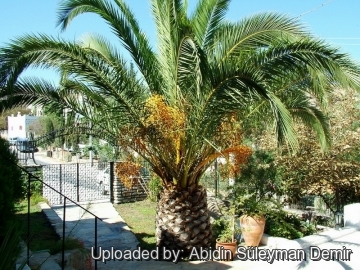 This palm is in Bodrum, Aegean coast of Türkiye. Photo by: Abidin Süleyman Demir
This palm is in Bodrum, Aegean coast of Türkiye. Photo by: Abidin Süleyman Demir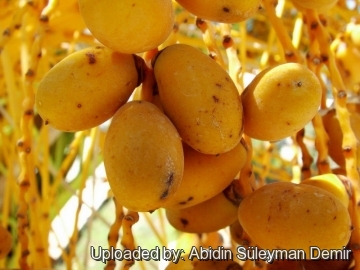 Phoenix canariensis Photo by: Abidin Süleyman Demir
Phoenix canariensis Photo by: Abidin Süleyman Demir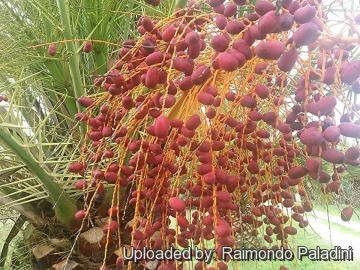 Phoenix canariensis Photo by: Raimondo Paladini
Phoenix canariensis Photo by: Raimondo Paladini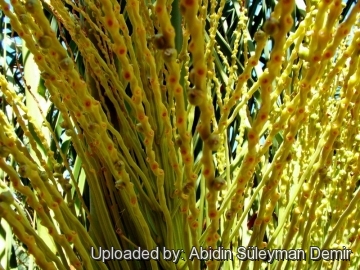 Phoenix canariensis Photo by: Abidin Süleyman Demir
Phoenix canariensis Photo by: Abidin Süleyman Demir This palm is in Noto, Siracusa (Sicily), Italy Photo by: Giuseppe Distefano
This palm is in Noto, Siracusa (Sicily), Italy Photo by: Giuseppe Distefano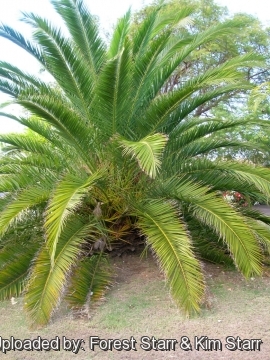 Habit at Enchanting Floral Gardens of Kula, Maui, Hawaii (USA). October 24, 2007. Photo by: Forest Starr & Kim Starr
Habit at Enchanting Floral Gardens of Kula, Maui, Hawaii (USA). October 24, 2007. Photo by: Forest Starr & Kim Starr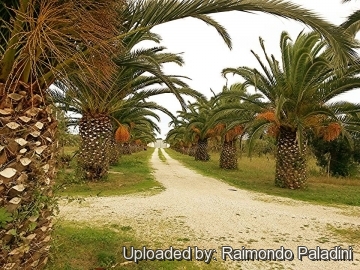 Phoenix canariensis Photo by: Raimondo Paladini
Phoenix canariensis Photo by: Raimondo Paladini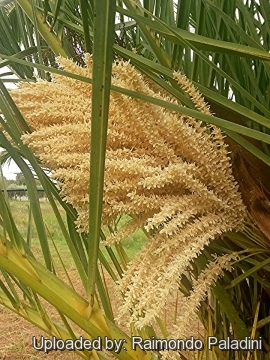 Phoenix canariensis Photo by: Raimondo Paladini
Phoenix canariensis Photo by: Raimondo PaladiniCultivation and Propagation: Phoenix canariensisSN|24938]]SN|24938]] is a very popular palm in gardens and parks around the world in tropical, subtropical and temperate regions due to its huge imposing attractiveness and hardiness. It is adapted to a Mediterranean climate with cool, moist winters and summer drought, and can grow on poor and rocky soils.
Soil: It is very adaptable to many kinds of well drained soils.
Fertilization: Need a perfect fertilizer diet including all micro nutrients and trace elements or a slow release fertilizer applied in spring and summer, or according to package directions.
Water Requirements: It tolerates low levels of humidity and summer drought, though it prefers evenly moist but not consistently wet medium. When supplied with adequate moisture and fertilizer it is also fairly fast growing. This palm is very drought tolerant once established. It dislikes soggy soils. Water young plants for healthy look and fastest growth.
Light: It prefers bright sunny locations, but it also does well in part shade with some direct sunlight when young.
Aerosol salt tolerance: It is salt resistant and may be grown near the sea.
Wind resistance: It endures drying winds.
Hardiness: These palms are some of the hardier palms, tolerating winter frosts down to about -10/?12°C for short periods , although it will require some protection if cold periods are longer than normal. ( USDA Zones 8-10)
Roots: Usually not a problem
Maintenance: For the healthiest and most attractive plant, keep the palm pruned. As the old fronds die, these should be trimmed off and the leaf bases allowed to dry out.
Pest and diseases: Young plants are very susceptible to leaf spot and other fungus infections when grown in humid climates.
Uses: It is used in gardening and landscaping in many parts of the world though in sheltered areas it will survive prolonged periods below freezing point. It is not suited to small gardens, due to its eventual large size, and spined petioles. The huge bulk of the Canary Island palm dwarfs most houses. This palm is very good for adding a Mediteranean feel and widely used along boulevards, on campuses and in parks and grouped in trios to form focal points in cityscapes. Seedlings are quite slow, but speed up considerably once they start to trunk. Small specimens are inexpensive and readily available and look great in pots on the patio, near the pool, or in pairs flanking entryways. .And thanks to its drought resistance and durability to heat it can thrive in harsh urban conditions. Time to ultimate height 20-50 years.
Food uses: In the Canary Islands, the sap of this date palm is used to make palm syrup.
Propagation: It is exclusively propagated by seed.
Your Photos

by Josef Cycad Perner

by Forest Starr & Kim Starr

by Abidin Süleyman Demir

by Forest Starr & Kim Starr

by Forest Starr & Kim Starr






















